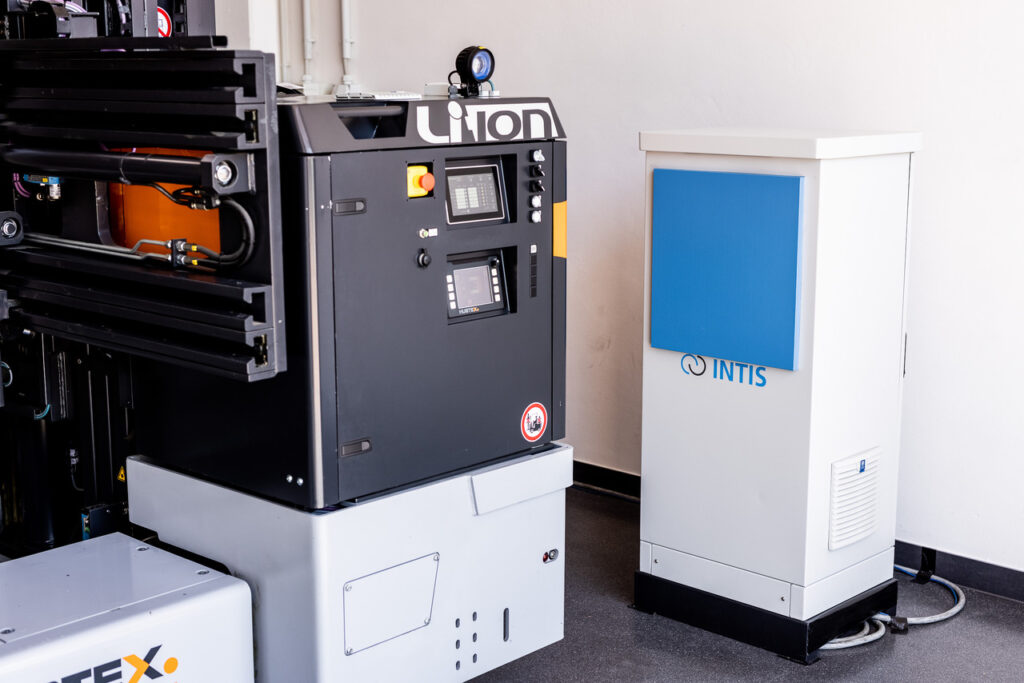HUBTEX and INTIS launch inductive charging system
12th April 2022

Choice of charging technology is key to the efficient use of Automated Guided Vehicles (AGVs) in intralogistics. The aim is to supply the vehicle with energy as quickly and cost-effectively as possible, while maximising the internal material flow. To achieve this, HUBTEX is forming a partnership with INTIS.
HUBTEX was responsible for introducing the PhoeniX AGV – the world’s first fully automated electric multidirectional sideloader for handling long, heavy and bulky goods. Now, thanks to an inductive charging system from INTIS, the vehicle’s 48V lithium-ion battery can be supplied with a charging current of 400A contactlessly and wirelessly. The same concept can then be transferred to all HUBTEX vehicles with electric drives.
As the requirements in intralogistics become ever more complex, energy management is increasingly used to save time and money. It has become clear that the only way to make your AGV solution as economical as possible is to choose an optimal charging system. In HUBTEX’s experience, stationary cable charging is not the best long-term solution due to the amount of time and space required. Manual charging is certainly the most economical solution, but it relies heavily on the employees.
Swapping the battery for a replacement, on the other hand, takes far less time but requires an appropriate charging infrastructure and skilled personnel. Another option is an automated battery changing station, which can, in many cases, reduce the number of vehicles required, but must be taken into account in the layout and design.
HUBTEX therefore believes that inductive battery charging for AGVs is the best way forward. In its chosen solution, charging pads on the vehicle automatically interact with charging plates on the floor or on the walls as soon as the vehicle is positioned accordingly.
Inductive charging
“By partnering with INTIS, a specialist in inductive charging technology, we are investing in a completely autonomous concept that we believe works best with a combination of lithium-ion batteries and an inductive battery charging system,” explains Michael Röbig, an expert in energy management at HUBTEX.
“In the past, maximum charge power was primarily achieved with cable-based charging equipment. Now we have inductive rapid charging systems, which can charge the vehicles quickly and ensure high availability thanks to the high charging currents.”
The compact charging station can be placed in the respective warehouse or production environment, where the users can take advantage of production-related downtimes for charging purposes, for example. The user has constant access to data such as capacity, status and charging time. Furthermore, inductive charging is maintenance-free, less susceptible to vandalism and, thanks to the smaller lithium-ion batteries, conserves resources. It also requires less time and effort than powering the vehicles using charging stations.

